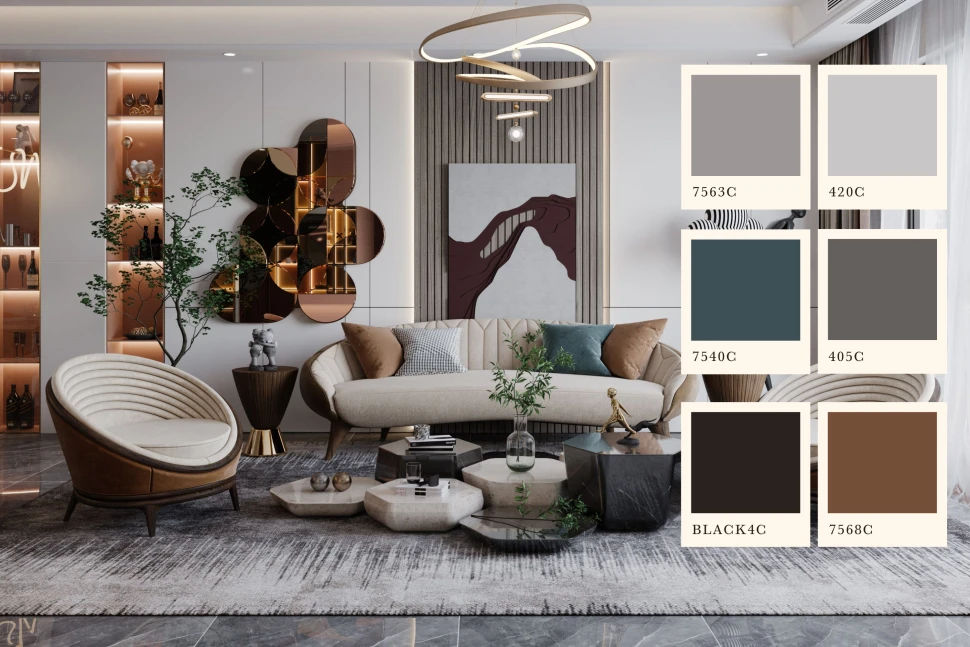
How to choose the colour palette for your interior design?
Have you ever walked into a room and instantly felt energized, relaxed, or inspired? The answer likely lies in the power of colour psychology. Colours have a profound impact on our moods, emotions, and even behaviour. Understanding how colours work in interior design can help you create spaces that not only look visually appealing but also feel exactly the way you want them to feel.
Demystifying the Science of Color:
Colours are more than just visual sensations; they trigger specific psychological responses. Warm colours like red, orange, and yellow tend to evoke feelings of energy, excitement, and passion. Cool colours like blue, green, and purple are often associated with calmness, peace, and tranquillity. Understanding these basic associations is a great starting point for using colour psychology in your home.
Choosing the Right Color Palette:

Selecting the right paint colours for different rooms is crucial. For example, a calming blue or green might be ideal for a bedroom to promote relaxation and sleep, while a stimulating yellow or orange could energize your home office and boost productivity.
Beyond the Basics: Unexpected Color Combinations:
Don’t be afraid to experiment with unexpected color combinations. A pop of contrasting color can add visual interest and personality to a space. However, it’s essential to consider color harmony and ensure the chosen colors complement each other. Tools like color wheels can help you find harmonious color combinations.
Cultural Considerations: The Global Language of Color:
The meanings and symbolism associated with colors can vary across cultures. Understanding these cultural nuances can be crucial when designing for a diverse audience. For example, while red often symbolizes passion and love in Western cultures, it can signify good luck and prosperity in some Asian cultures.
Trending Now: Color Palettes for the Next Season:
Staying informed about upcoming color trends can help you create a space that feels modern and fresh. Researching popular color forecasts for the upcoming season can provide valuable inspiration for your next design project.
Harnessing Color to Enhance Architectural Features:
Color can be a powerful tool for highlighting or minimizing architectural features. Using lighter colors on expansive walls can make a room feel larger, while darker shades can draw attention to specific features like fireplaces or bookshelves.
A World of Color: Exploring the Psychology Across Cultures:
The psychology of color is a fascinating and complex topic with diverse applications across cultures. By delving deeper into the cultural significance of colors, you can create spaces that are not only aesthetically pleasing but also resonate with people from different backgrounds.
Taking Action: Easy Steps to Embrace Color Psychology:
Start by identifying the mood you want to create in each room of your home. Then, research the psychological associations of different colors and choose a palette that aligns with your desired atmosphere. Don’t be afraid to experiment with color combinations and seek inspiration from online resources and design professionals. Remember, your home is a blank canvas waiting to be painted with the colors that reflect your personality and create your dream mood.



